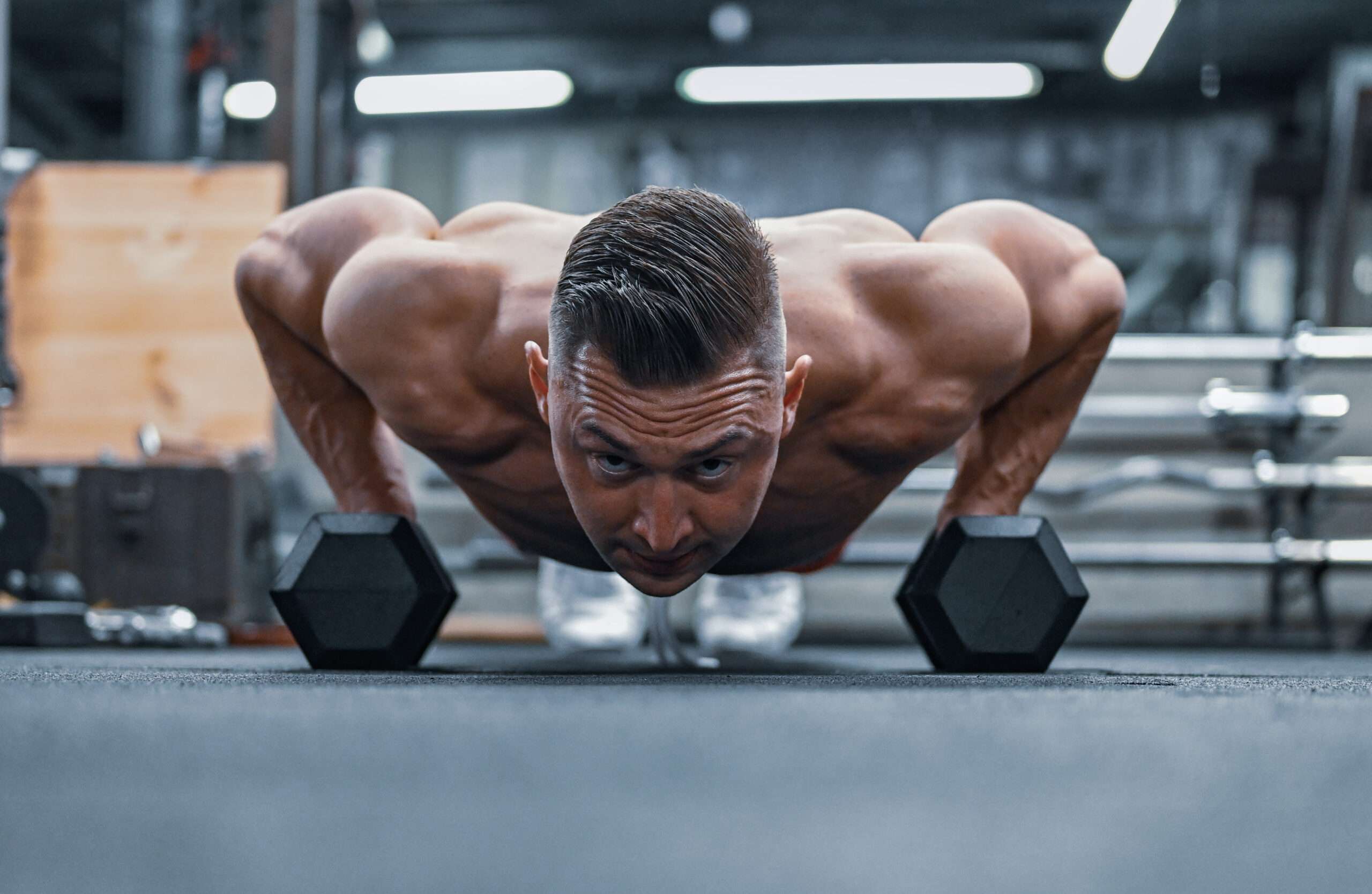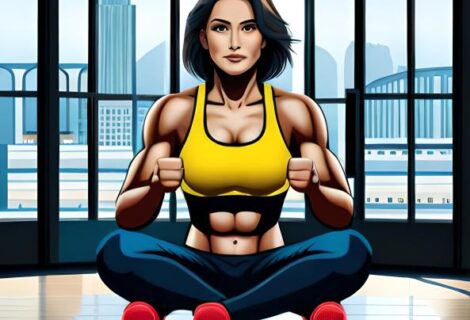The Top 10 Bodyweight Exercises for a Full-Body Workout
[disclosure]
Introduction to Bodyweight Exercises
Bodyweight exercises are an excellent way to build strength, increase endurance, and improve overall fitness. They can be done anywhere, without any equipment, making them an ideal choice for those who prefer to workout at home. In this post, we’ll be discussing the top 10 bodyweight exercises for a full-body workout, including modifications and variations to accommodate different fitness levels and abilities.
Top 10 Bodyweight Exercises
1. Push-ups
Benefits include strengthening the chest, shoulders, triceps, and core. To perform a push-up, start in a plank position with your hands shoulder-width apart, lower your body until your chest touches the ground, and push back up to the starting position.
Modifications and Variations
– Knee push-ups: Reduce the weight on your upper body by lowering your knees to the ground.
– Incline push-ups: Place your hands on an elevated surface such as a bench or step.
– Diamond push-ups: Place your hands close together to focus more on your triceps.
2. Squats
Benefits include strengthening the legs, glutes, and core. To perform a squat, stand with your feet shoulder-width apart, lower your body until your thighs are parallel to the ground, and stand back up to the starting position.
Modifications and Variations
– Chair squats: Sit on a chair and stand up, using your legs to lift yourself off the chair.
– Jump squats: Add a jump at the end of the squat to increase the intensity.
– Single-leg squats: Stand on one leg and lower your body until your thigh is parallel to the ground.
3. Lunges
Benefits include strengthening the legs, glutes, and core. To perform a lunge, step forward with one foot, lower your body until your thigh is parallel to the ground, and stand back up to the starting position.
Modifications and Variations
– Reverse lunges: Step backward instead of forward.
– Side lunges: Step to the side instead of forward.
– Walking lunges: Perform lunges while walking forward.
4. Plank
Benefits include strengthening the core, shoulders, and back. To perform a plank, start in a push-up position and hold your body in a straight line, with your elbows and toes touching the ground.
Modifications and Variations
– Knee plank: Reduce the weight on your core by lowering your knees to the ground.
– Side plank: Rotate your body to one side and hold yourself up with one arm.
– Plank with leg lifts: Lift one leg off the ground and hold it for a few seconds before lowering it back down.
5. Burpees
Benefits include strengthening the entire body and improving cardiovascular endurance. To perform a burpee, start in a standing position, drop down to a push-up position, do a push-up, jump your feet back to your hands, and then jump up in the air.
Modifications and Variations
– Step-back burpees: Step back to a push-up position instead of jumping.
– Squat thrusts: Perform a squat instead of a jump at the end.
6. Pull-ups
Benefits include strengthening the back, shoulders, and arms. To perform a pull-up, grab a bar with your palms facing away from your body, and pull your body up until your chin is above the bar.
Modifications and Variations
– Assisted pull-ups: Use a resistance band or have a partner assist you in pulling yourself up.
– Inverted rows: Lie underneath a bar and pull yourself up towards it while keeping your body in a straight line.
– Negative pull-ups: Jump up to the top of the pull-up position and lower yourself down slowly.
7. Dips
Benefits include strengthening the triceps, chest, and shoulders. To perform a dip, place your hands on parallel bars or the edge of a bench, lower your body until your arms form a 90-degree angle, and then push yourself back up to the starting position.
Modifications and Variations
– Bench dips: Perform dips with your hands on a bench and your feet on the ground.
– Straight-bar dips: Perform dips with your hands on parallel bars that are further apart.
– Weighted dips: Hold a weight between your legs to increase the intensity.
8. Mountain climbers
Benefits include strengthening the core, legs, and shoulders. To perform mountain climbers, start in a plank position and bring one knee up towards your chest, alternating between each leg.
Modifications and Variations
– Slow mountain climbers: Slow down the movement to increase the intensity.
– Cross-body mountain climbers: Bring your knee up to the opposite elbow.
– Spiderman mountain climbers: Bring your knee up to the outside of your elbow.
9. Glute bridges
Benefits include strengthening the glutes, lower back, and core. To perform a glute bridge, lie on your back with your knees bent and feet flat on the ground, lift your hips up towards the ceiling, and then lower them back down to the starting position.
Modifications and Variations
– Single-leg glute bridges: Perform the exercise with one leg lifted off the ground.
– Weighted glute bridges: Hold a weight on your hips to increase the intensity.
– Bridge hold: Hold the bridge position for a longer period of time.
10. Plank jacks
Benefits include strengthening the core, legs, and shoulders. To perform plank jacks, start in a plank position and jump your feet out wide, and then jump them back together.
Modifications and Variations
– Slow plank jacks: Slow down the movement to increase the intensity.
– One-leg plank jacks: Perform the exercise with one leg lifted off the ground.
– Side plank jacks: Rotate your body to one side and perform plank jacks.
Conclusion
Bodyweight exercises are an effective way to improve overall fitness without the need for equipment. The top 10 bodyweight exercises listed in this post target multiple muscle groups and can be modified to accommodate different fitness levels and abilities. Incorporate these exercises into your workout routine for a full-body workout.
Unlocking the Potential of Ozempic for Weight Loss: A Comprehensive Guide
FAQ
Q: What are bodyweight exercises?
Bodyweight exercises are exercises that use your own body weight as resistance, rather than using equipment or weights.
Q: Can bodyweight exercises build muscle?
Yes, bodyweight exercises can build muscle, especially when done in combination with a healthy diet and enough rest.
Q: Are bodyweight exercises enough for a full-body workout?
Yes, bodyweight exercises can provide a full-body workout, especially when combined with cardio exercises such as running or jumping rope.
Q: Can beginners do bodyweight exercises?
Yes, beginners can start with modifications of bodyweight exercises and gradually progress to more challenging variations as their fitness level improves.
You may find the following posts of interest:
The Planet Fitness App: Discover the Top 5 Features
References:
Mayo Clinic. (2021, January 5). Strength training: Get stronger, leaner, healthier.
National Academy of Sports Medicine. (n.d.). Bodyweight training. Retrieved from https://www.nasm.org/fitness-resources/bodyweight-training
Pinto, R. S., Gomes, N., Radaelli, R., Botton, C. E., Brown, L. E., & Bottaro, M. (2012). Effect of range of motion on muscle strength and thickness. Journal of strength and conditioning research, 26(8), 2140-2145.









